|
Durham
Manufacturing Company in World War Two
Muncie, IN
Circa 1910-1970
This page updated 12-9-2022.
An American Auto
Industry in World War Two Special Edition
If disaster hadn't struck Durham Manufacturing
Company on February 3, 1956, I might have been able to drive the 13
miles from my residence and take current photos of the Durham factory
for this page. However, on that date much of the Durham factory in
Muncie, IN was destroyed in a $2,000,000 fire. The company survived
the fire and stayed in business until 1970. I became aware of
the company while working on my "VT Proximity Fuze Manufacturers of
World War Two" page. It was one of three companies in Indiana that
participated in the U.S. Navy's VT proximity fuze program.
The earliest historical date for the company
is 1910. With the exception of World War
Two, Durham made metal chairs and tables.
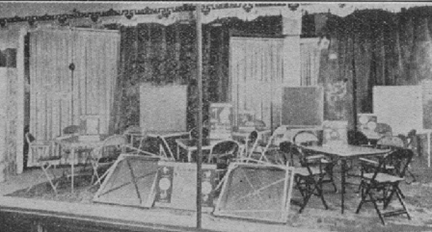
Card tables and folding chairs were the main
product line of the company in peacetime.
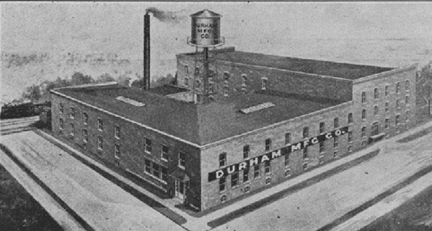
An artist's rendering of the Durham
Manufacturing Company's plant in Muncie, IN. The company's address
is given as the corner of Mound and Cleveland Streets in Muncie.
In the above image, Cleveland is the street that runs in front of the
company's sign. Mound runs north all the way to the railroad
tracks behind the factory.
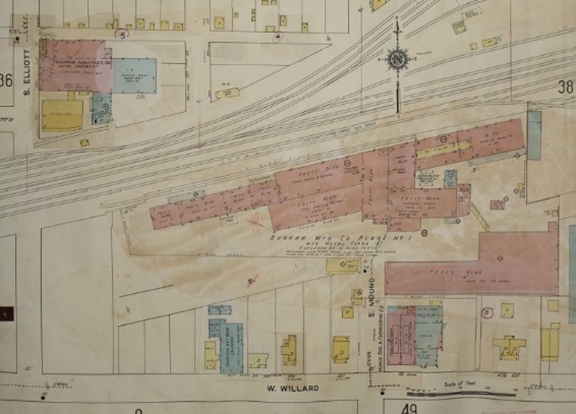
This Sanborn Insurance map shows a later
version of the Durham factory that had expanded southwest along the
railroad tracks. Mound Street stops at Cleveland. Cleveland
runs parallel to the railroad tracks and is only two blocks long.
The location of the former plant is several blocks south and west of
downtown Muncie.
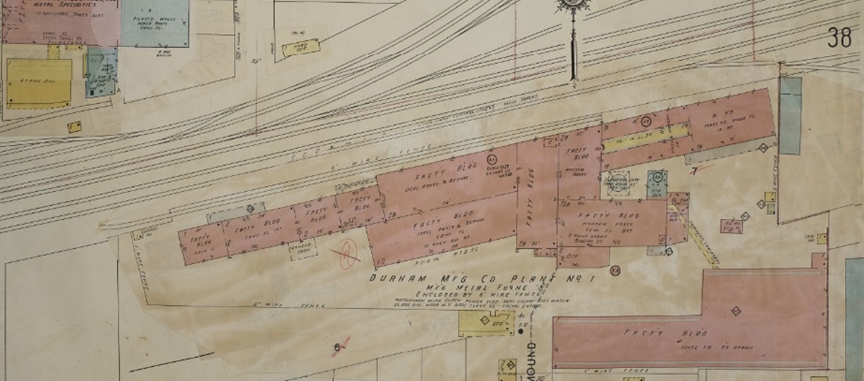
Today Cleveland Street is gone. New
factories and warehouses are in the location of the former Durham plant.
Durham Manufacturing Company in World War
Two: Durham was a supplier to the U.S. Navy of 20mm and 40mm
shells for much of the war. For this effort, the company received
the Navy "E" flag once and the Army-Navy "E" flag four times. The
Navy "E" flag was awarded to excellent suppliers until July 1942 when it
was combined with the U.S. Army to create the Army-Navy "E" award.
Companies that had originally been given the Navy flag had the choice of
staying with the Navy award or converting to the new Army-Navy award.
Durham chose to convert. Historical photos show company officials
with both types of flags. The photos also show Navy officers
attending the award ceremonies indicating the Durham was a Navy
supplier.

The Navy "E" flag awarded Durham Manufacturing
Company would have looked just like this one. It would have been
awarded in the first six months of 1942. This example is actually
a Navy "E" flag won by the American Blower Corporation, Dearborn, MI. Photo courtesy of Mary Pamula.
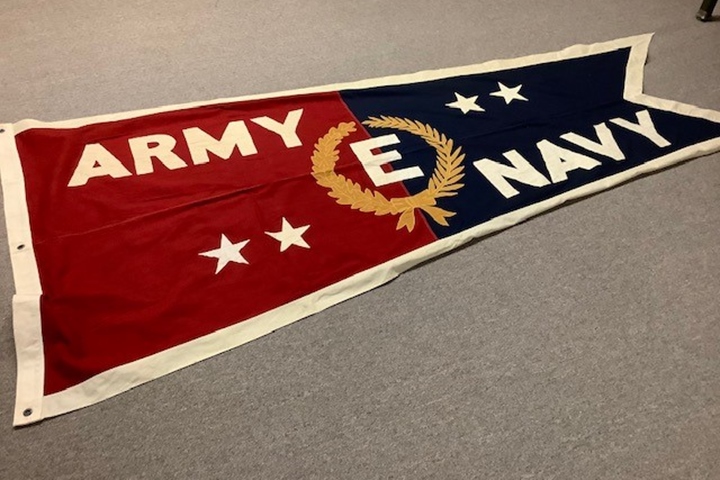
Stars were added to the flag approximately
every six months if a company continued to exceed production quotas.
After Durham received its fifth award, it had an Army-Navy "E" flag just
like this one. It would have received its fourth star in 1944.
This example is actually an Army-Navy "E" flag won by the American
Blower Corporation, Dearborn, MI. Photo courtesy of Mary Pamula.
Durham Manufacturing Company in World War
Two: Table 1 shows that the Durham Manufacturing Company had
$54,715,000 in major contracts during World War Two. The company
converted from making tables and chairs to providing both the U.S. Army
and U.S. Navy with shells, fuzes, and other types of similar ordnance
items and related products. It also manufactured anti-tank mines
for the U.S. Army during 1941 and 1942. Table 1 shows that shells
and projectiles were main products for those same years with fuzes then
becoming the focus of the company's products for the second half of
World War Two. Most likely the Army and Navy determined that it
was capable of producing more the just projectiles and began giving the
company more complicated products as it proved itself capable.
Table 1- Durham Manufacturing Company's
Major World War Two Contracts
The information below
comes from the "Alphabetical Listing of Major War Supply
Contracts, June 1940 through September 1945." This was
published by the Civilian Production Administration, Industrial
Statistics Division. |
|
Product - Customer |
Contract Amount |
Contract Awarded
Date |
Completion
Date |
| Ordnance Material
- Army |
$250,000 |
4-1941 |
12-1941 |
| Forgings - Navy |
$650,000 |
6-1941 |
7-1942 |
| Forgings - Navy |
$2,723,000 |
6-1941 |
3-1943 |
| Mines - Army |
$62,000 |
11-1941 |
3-1942 |
| Projectiles -
Navy |
$2,307,000 |
1-1942 |
12-1942 |
| Shells - Army |
$1,383,000 |
2-1942 |
8-1942 |
| Shells - Army |
$2,588,000 |
4-1942 |
5-1944 |
| Mines - Army |
$185,000 |
4-1942 |
10-1942 |
|
Projectiles - Navy |
$1,943,000 |
5-1942 |
7-1943 |
| Projectiles -
Navy |
$4,230,000 |
7-1942 |
11-1943 |
| Fuzes - Army |
$1,032,000 |
8-1942 |
12-1943 |
| Shens - Army |
$1,240,000 |
9-1942 |
1-1943 |
| Mines - Army |
$542,000 |
9-1942 |
9-1943 |
| Ordnance
Equipment - Navy |
$1,383,000 |
12-1942 |
8-1943 |
| Ordnance Material
- Navy |
$2,983,000 |
12-1942 |
7-1943 |
| Cans - Navy |
$5,600,000 |
1-1943 |
2-1944 |
| Ordnance
Equipment - Navy |
$1,425,000 |
2-1943 |
1-1944 |
| Mine Post Assys
M1A1 - Army |
$391,000 |
4-1943 |
10-1943 |
| Fuze Bodies -
Navy |
$2,250,000 |
6-1943 |
12-1944 |
| Steel Cans Tools
- Navy |
$1,040,000 |
6-1943 |
1-1944 |
| Projectiles -
Navy |
$1,044,000 |
6-1943 |
7-1944 |
| Fuzes BD
M72 - Army |
$613,000 |
10-1943 |
6-1944 |
| Shells 40mm -
Army |
$386,000 |
11-1943 |
6-1944 |
| Metal Liner
Sleeves - Navy |
$6,130,000 |
12-1943 |
8-1944 |
| Fuzes PD M5281 -
Army |
$655,000 |
1-1944 |
10-1944 |
| Projectiles 40mm
Mk2 - Navy |
$2,380,000 |
3.1944 |
2-1945 |
| Bomb Nose Fuzes
T105 - Army |
$50,000 |
2-1944 |
10-1944 |
| Fuzes BD
M72 - Army |
$208,000 |
5-1944 |
9-1944 |
| Fuze Bodies Mk28
- Navy |
$448,000 |
7-1944 |
12-1944 |
| Shells 40mm HE
MK11 - Army |
$384,000 |
8-1944 |
3-1945 |
| Projectile
Grooving - Navy |
$90,000 |
9-1944 |
1-1945 |
| Fuzes PD M5281 -
Army |
$320,000 |
9-1944 |
3-1945 |
| Fuzes BD72- Army |
$377,000 |
10-1944 |
3-1945 |
| Target
Projectiles - Navy |
$270,000 |
10-1944 |
3-1945 |
| Bomb Nose Fuzes
T105- Army |
$426,000 |
11-1944 |
6-1945 |
| Fuze Hole Plugs -
Navy |
$982,000 |
11-1944 |
7-1945 |
| Projectiles 40mm
MK2 - Navy |
$1,960,000 |
11-1944 |
6-1945 |
| Fuzes PD M5286 -
Army |
$226,000 |
12-1944 |
6-1945 |
| Fuze Body Assys -
Navy |
$1,585,000 |
12-1944 |
11-1945 |
|
Outboard Shaft Assys - Navy |
$55,000 |
12-1944 |
3-1945 |
| Fuzes
BD M72 - Army |
$262,000 |
1-1945 |
6-1945 |
| Fuze Bodies
MK149 - Navy |
$200,000 |
1-1945 |
10-1945 |
| Projectiles 40mm
- Navy |
$393,000 |
2-1945 |
12-1945 |
| Fuzes PD M52A11 -
Army |
$372,000 |
2-1945 |
8-1945 |
| Fuze Hole Plugs -
Navy |
$692,000 |
4-1945 |
12-1945 |
| Total |
$54,715,000 |
|
|
Table 2 shows that the U.S. Navy projectiles
were the company's largest product category.
|
Table 2 -
Durham Manufacturing
Company's Major World War Two Product Categories |
|
Product |
Amount |
Percentage |
| Mines - Army |
$1,180,000 |
2.1% |
| Projectiles /40mm
Projectiles - Navy |
$14,527,000 |
26.6% |
| Shells / Shells
40mm - Army |
$4,741,000 |
8.7% |
| Fuzes, various
types - Army |
$4,541,000 |
8.3% |
| Fuzes, various
types - Navy |
$4,483,000 |
8.2% |
| Total
|
$28,440,000 |
53.9% |
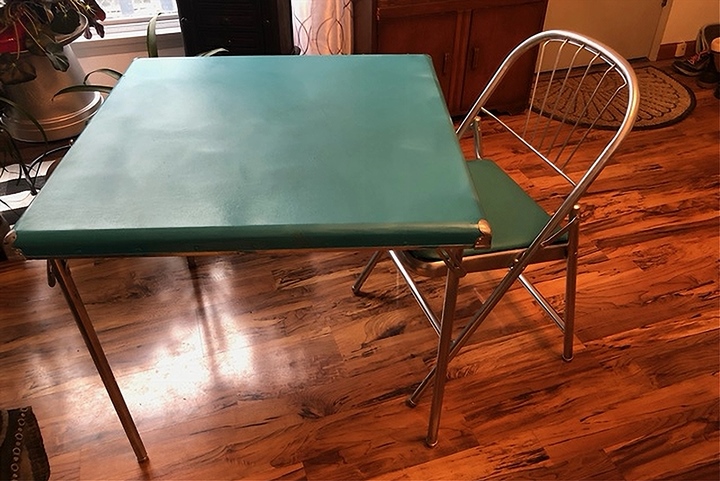
Before and after World War Two, Durham
Manufacturing manufactured card tables and chairs like this set.
These are from the Mary McFarland collection. The U.S. Army and
U.S. Navy didn't need any card tables and chairs to win World War Two.
Durham Manufacturing re-tooled for war products and produced fuzes,
projectiles, and land mines as shown in the photo below. Photo courtesy
of Mary McFarland.
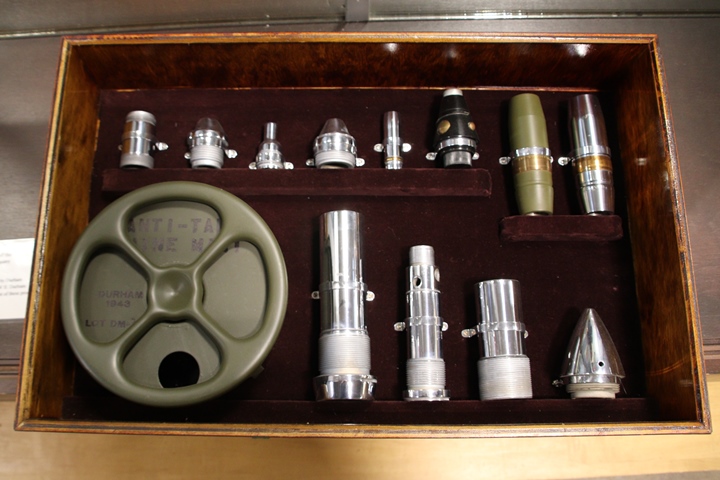
How cool is this? This display case of
Durham World War Two products has survived both the end of World War Two
and the destruction of the company's plant by a fire in 1956.
Someone in the company no doubt saved this historic product collection
and donated it to the Museum of the Soldier in Portland, IN.
Author's photo added 12-9-2022.
In the lower left of the display case is an
anti-tank mine. The four different types of fuze bodies are to the right
of the anti-tank mine. The upper row of items contains from left
to right four fuze bodies, a 20mm projective, a fuze, and then two 40mm
projectiles. All of the parts except the land mine have been
chromed, or partly chromed. This has kept these examples from
rusting since they were made in World War Two.
The fuzes and projectiles are machined parts.
Durham machined the fuze bodies which were then forwarded to an ordnance
plant were explosive detonator components were added to make the final
fuze assembly.

As with the projectiles, Durham did not
install the explosives in the anti-tank mine. That was for an
Ordnance plant to complete. Durham only fabricated the metal
casing and upper spider web pressure plate of the mine. The
anti-tank or anti-vehicle mine is designed such that when a soldier
stepped on the pressure plate, he did not activate the device. He
did not have enough weight for the top spider web pressure plate to
collapse. However, the weight of a vehicle forced the bottom of
the legs on the spider web pressure plate to break away from lip around
the mine. The spider web pressure plate then collapsed and the
vehicle's tire or tank track set off the detonator in the center of the
mine. Author's photo added 12-9-2022.
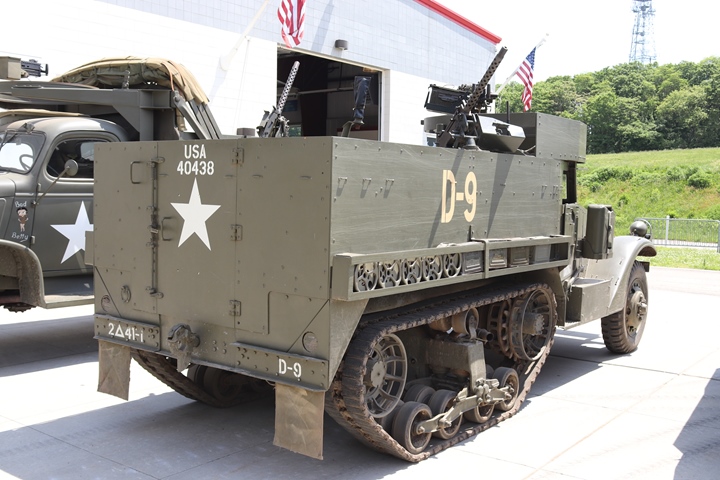
This Diamond T M3A1 half-track has five anti-tank mines in its storage
rack. Author's photo.
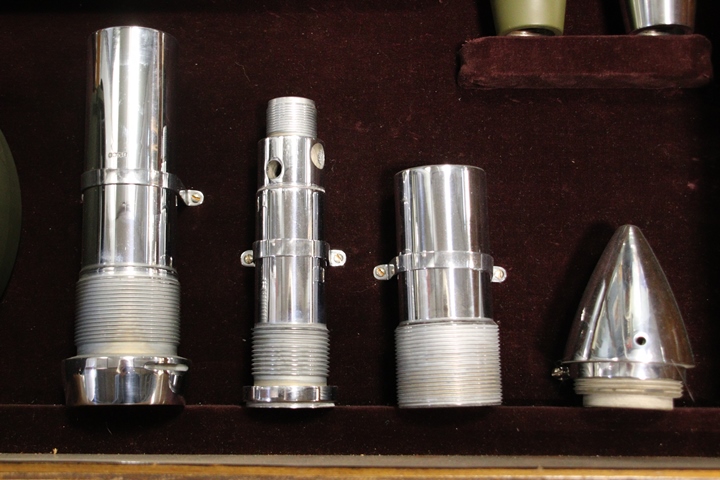
Next to the anti-tank land mine in the
display case are these four fuze housings. Author's photo added
12-9-2022.
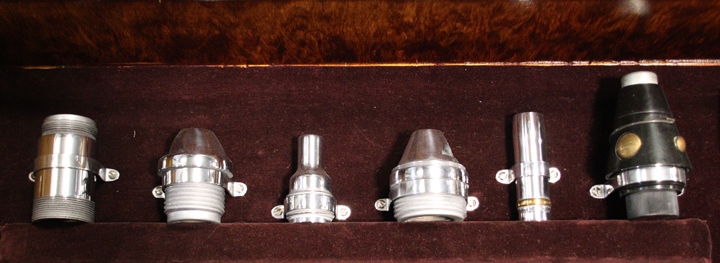
The first four pieces from the left are fuze
housing. The item to the right of the fuze housings is a 20mm
projectile. All of the 20mm projectiles that Durham manufactured
were for use in the Navy's 20mm Oerlikon 20mm anti-aircraft guns.
The fuze on the far right has a Bakelite, rather than steel, housing.
Author's photo added 12-9-2022.
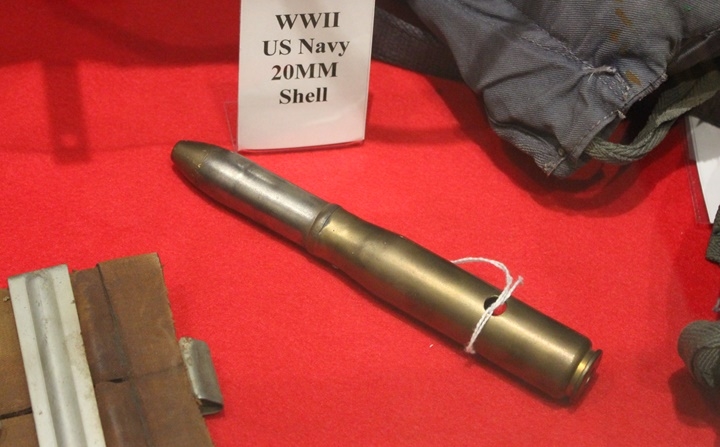
This is a photo of the complete 20mm
projectile, fuze, and shell casing. Author's photo.
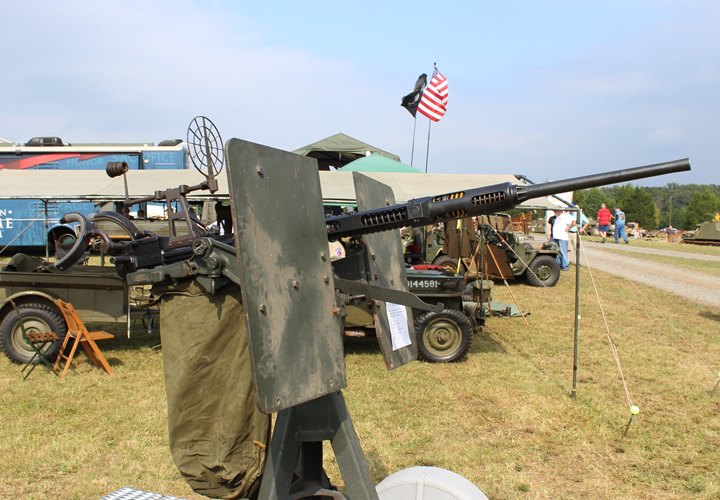
The 20mm Oerlikon started appearing on U.S.
Navy ships in early 1942. By the end of the war, every Navy and
U.S. Merchant Marine ship was armed with the 20mm Oerlikon for close-in
defense against air attack. Durham was a significant contributor
to keeping these weapons firing and protecting American ships and
sailors. Author's photo.
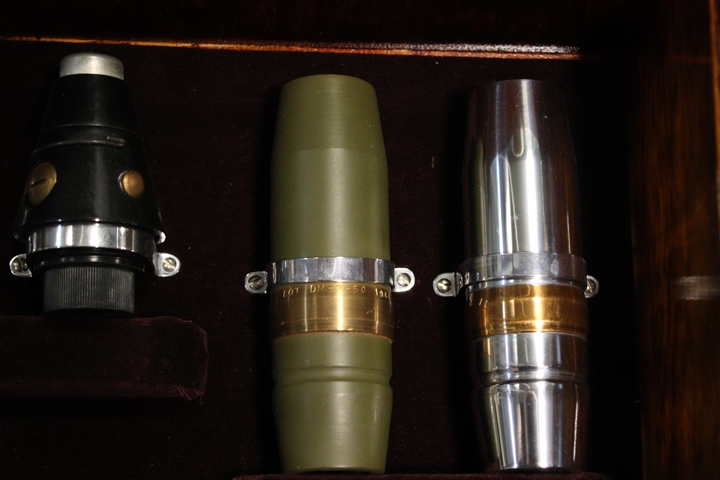
This shows both the M52B1 mortar shell fuze
with a Bakelite body. These were fuzes were used with both 60mm
and 81mm mortar shells and had a quick firing detonator. On the
right hand side of the photo are two 40mm projectiles or shells.
The Navy denoted them as projectiles while the Army called them shells.
Both examples have a brass ring installed. Author's photo added
12-9-2022.
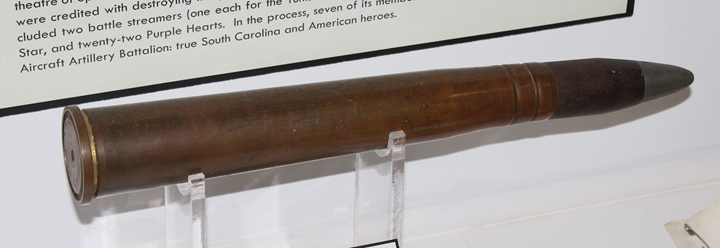
Durham Manufacturing also produced the 40mm
Bofors projectile for both the Navy and Army. The projectile is the black piece.
The gray fuze on the tip of the projectile, the projectile, and the
shell casing were all installed at an ordnance
plant. Author's photo.

The complete 40mm Bofors shells came in
clips of four. Author's photo taken at the Michigan Technical and
Historical Society.
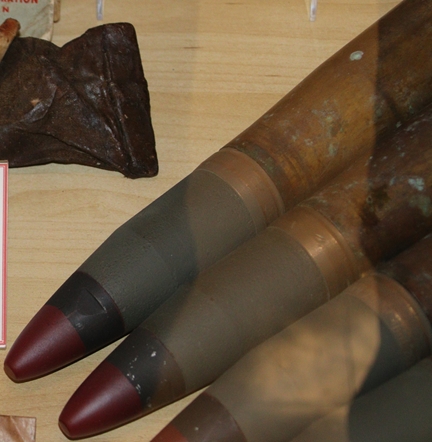
The completed projectile weighed 1.985
pounds. The gray portion of the shell is the portion Durham
manufactured. Author's photo taken at the Michigan Technical and
Historical Society.
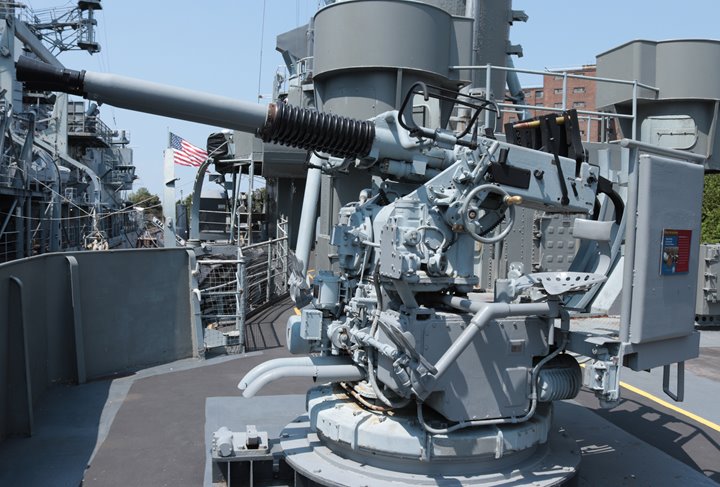
The 40mm Bofors was the intermediate range anti-aircraft weapon for the
U.S. Navy. As the war progressed, more and more 40mm cannons were
added to ships to protect against the very real threat of air attack.
Author's photo.

Members of the 466th AAA
Automatic Weapons Battalion (Colored) are depicted in this full scale
diorama of loading a 40mm Bofors gun in readiness for an enemy attack on
Dreger Airfield in northeast New Guinea during World War Two. This and other
dioramas are on display at the National Museum of the United States Army
at Fort Belvoir, VA. The 466th AAA Automatic Weapons Battalion was
one of two segregated all African-American anti-aircraft units that
served at Dreger Airfield in 1944. Author's photo added 12-9-2022.
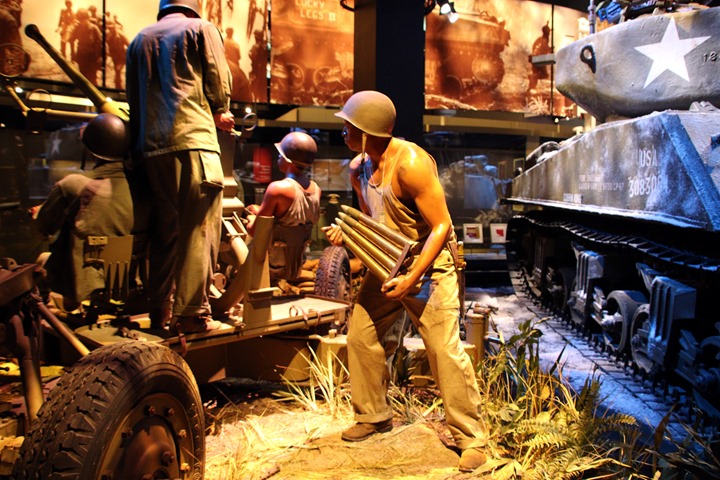
Each 40mm round weighed 4.75 pounds. Each four round clip
weighed over nineteen pounds. This diorama depicts the size of the
clip in relation to the soldier holding it. Author's photo added
12-9-2022.
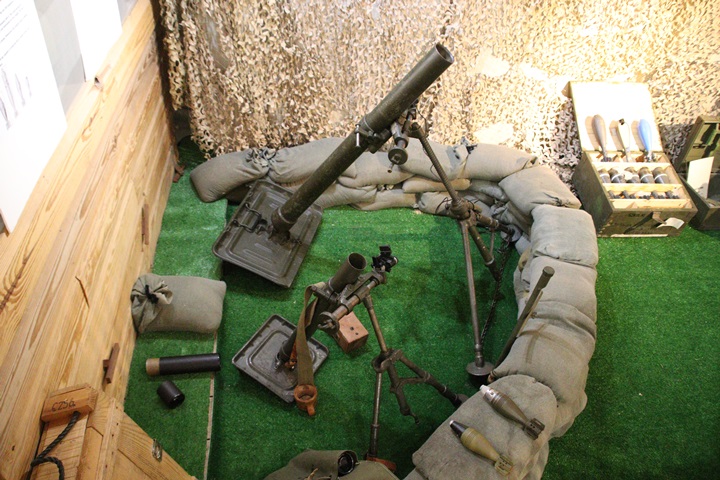
Shown in this image is a 60mm mortar and a
81mm mortar. Laying on the sandbags are two 60mm mortar shells.
Author's photo added 12-9-2022.
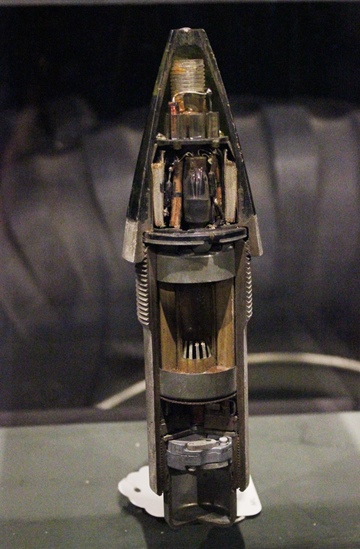
The U.S. Navy was no doubt impressed by the
performance of the Durham Manufacturing Company because it was chosen to
be a supplier for the top secret VT fuze program. Durham was
probably unaware of the significance of the part or parts it provided
for the VT fuse. No doubt it was given engineering drawings and
specifications by the Navy factory representative and told to build the
part. Author's photo.
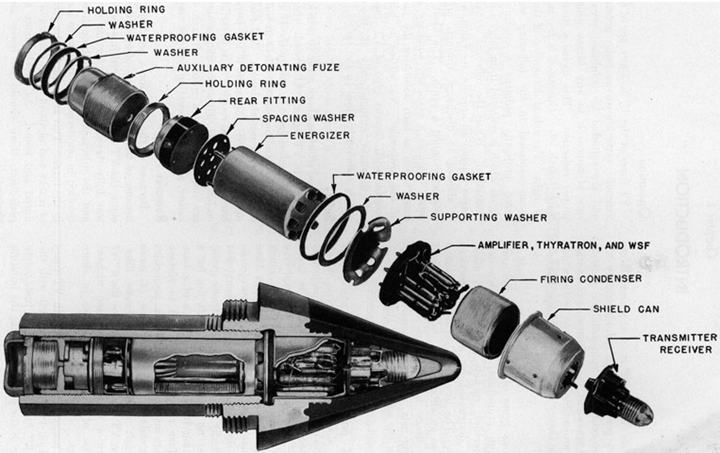
This image shows many of the parts that went
into a typical VT fuze. Most likely Durham produced one of the
steel pieces on the fuze. There are several of these in the fuze.
The closest final assembly plant for the fuze was at the RCA plant in
Bloomington, IN. There were only three companies in Indiana
involved with VT fuze production during World War Two.
An Afterword: An internet search
will produce information from two historical archives in Muncie, IN.
One of them has several photo files of Durham's World War Two production
of 20mm and 40mm projectiles. Machining operations and heat treat
ovens are in the photos. There are also photos of the anti-tank
mines being painted and then assembled. It was in the paint room
that the fire on February 3, 1956 started and destroyed the most of the factory.
|























